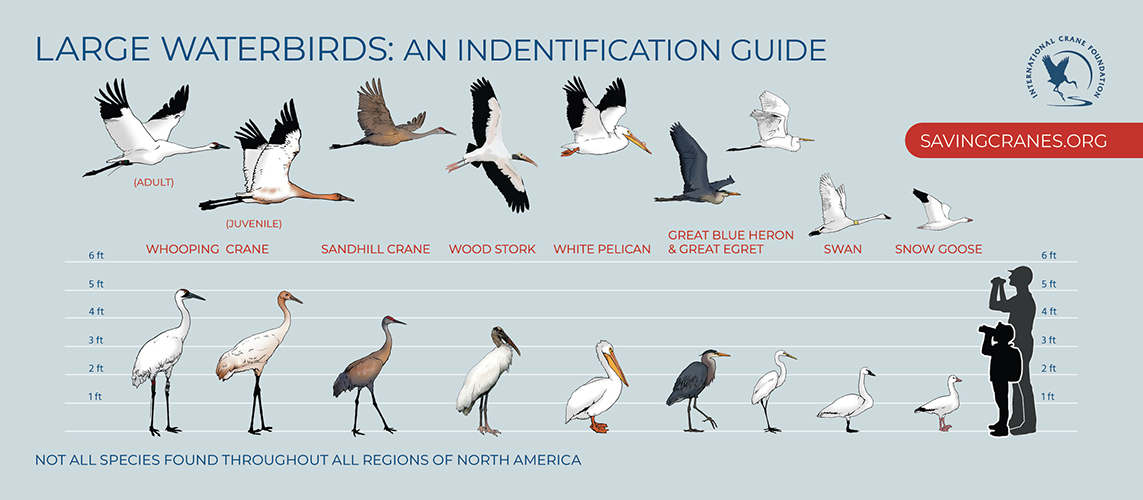Birds Similar to Cranes
What Bird Species Am I Seeing?
Still not sure which species you observed? There are several birds in North America that resemble cranes and are often mistaken for a crane at first glance (even by biologists!) If you are unsure about what species you are observing, see below for images and descriptions of some birds that are commonly mistaken for cranes.
If you find any of these birds with an aluminum band, please report it to the USGS Bird Banding Laboratory. Learn more about Sandhill Cranes and Whooping Cranes.

Wood Stork (Mycteria americana) – Wood Storks are rare, but as colonial nesting birds, you may see several at a time in certain places in the southeast US. They are large birds that resemble Whooping Cranes superficially with a white body and black flight feathers; however, Wood Storks’ black feathers are located along the entire length of the wing.
American White Pelican (Pelecanus erythrorhynchos) – Pelicans are found in the northern tier of the US. When flying, the black of a pelican wing is along the entire length of the wing and its legs do not trail beyond the stocky body.
Great Blue Heron (Ardea herodias) – Herons are found throughout the US. They are similar in characteristics and habits to egrets, the only exception being herons’ blue-gray coloration. They can be distinguished from Sandhill Cranes by the “crooked” neck and curved (as opposed to cranes’ flat) wings in flight.
Great Egret (Ardea alba) – Great Egrets are slightly shorter than Sandhill Cranes, at about 3-4 feet tall. They are much more slender than cranes and have a yellow bill. These waterbirds are indigenous to the wetlands of the eastern US but are rarely seen in upland areas. When flying, egrets tuck their necks back in an “S” curve and are 100% white.
Trumpeter Swan (Cygnus buccinator); Tundra Swan (Cygnus columbianus); Mute Swan (Cygnus olor) – These three swans are among the largest flying birds found in North America. All are similar in size and are difficult to distinguish from each other at a distance but can be distinguished from Whooping Cranes by their short legs trailing behind their tails and the lack of black wing feathers.
Snow Goose (Chen caerulescens) – Snow Geese can be seen in the central US during peak migration times in spring and fall. Snow Geese in the white phase have white bodies and black wingtips, but are small in stature.